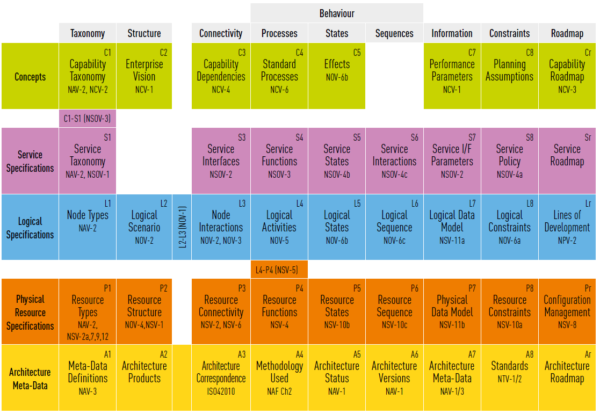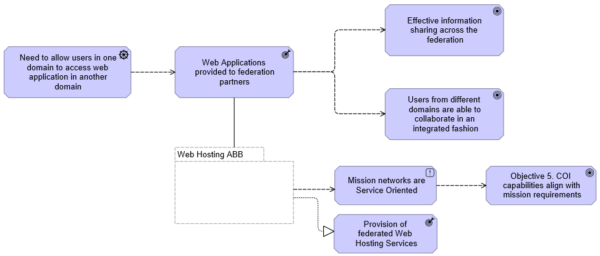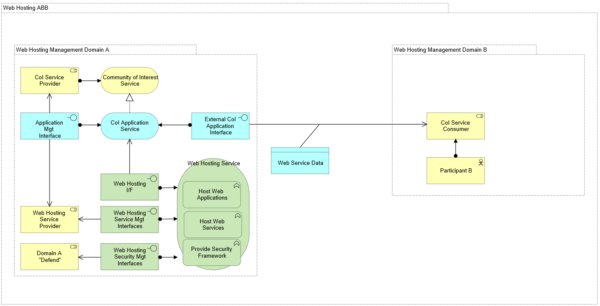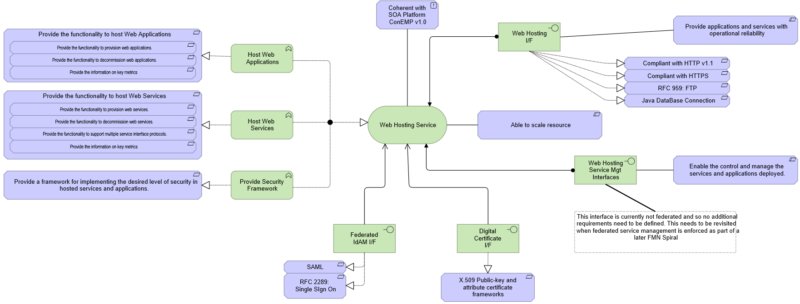In the previous instalments in this series, we discussed common drivers for architecture in defence and industry, commonalities between the architecture practice in defence and the civil sector, and why the ArchiMate language was chosen as a recommended standard for expressing architectures in the NATO Architecture Framework v4. In this final instalment, we discuss the work that still needs to be done for using ArchiMate in the context of NAF v4.
– Kevin Wallis (MOD ISS) & Marc Lankhorst (BiZZdesign)
Previously, we outlined how ArchiMate has evolved to a point where its concepts cover all salient aspects of enterprise architecture in the defence domain. That does not mean that it is a complete 1-to-1 fit. ArchiMate was developed for, with, and by organizations in the civil sector. In addition, terminology in the defence domain is sometimes different from that in, say, government or finance. However, these differences can largely be overcome by a straightforward mapping of terms. A full table of terms would be far too large (and too boring) for a blog post, but the table below gives you an impression of corresponding terms.
| NAF/MODAF term | ArchiMate concept |
| Mission | Course of Action |
| Concern | Driver |
| External Individual | Stakeholder, Business Actor |
| Needline | Business Interaction or Flow relationship (depending on context) |
| Function | Business Function |
| Mission Thread | Business Process |
| Forecast | Assessment |
| Climate | Constraint |
| Enterprise Goal | Goal |
| Capability | Capability |
| Requirement | Requirement |
| Assigned Property | Value |
| Actual Location | Location |
| Actual Organisation | Business Actor (or Business Collaboration) |
| Actual Post | Business Actor |
| Post Type | Business Role |
| Entity | Business Object |
| Product | Product |
This mapping shows that the conceptual world of ArchiMate is sufficient to express the needs of the defence domain. Sometimes, ArchiMate’s specialization and stereotyping features may be helpful, but the UK MOD has decided to use ArchiMate ‘straight,’ without such customizations, to facilitate the exchange of models with industry.
The most important use of ArchiMate in this context lies in expressing the various viewpoints prescribed by NAF v4, which are listed in the grid shown below.

Overview of NAF v4 viewpoints (from NATO Architecture Framework v4)
Importantly, NAF v4’s use of viewpoints is information-centric; it divides the framework into categories of architectural information, rather than how that information is presented (which was the NAF v3 approach). This is well-aligned with ArchiMate’s distinction between an architecture model’s content and its presentation in views; the same model element may be present in multiple views yet depicted in different ways to address various audiences.
All viewpoints above are described in more detail in the NAF v4 specification. One important next step is to provide ArchiMate examples for these. A few viewpoints are best expressed using simple tables or grids (catalogues and matrices in TOGAF terminology), not using ArchiMate’s standard notation but based on one and the same underlying model. Similarly, some detailed design viewpoints might be better articulated using the Unified Architecture Framework Profile (UAFP), the other standard approved for use in NAF. Since ArchiMate was designed with interoperability with other standards in mind, using both together does not pose any conceptual problems. In fact, the Open Group and Object Management Group are both working with NATO to agree on how to efficiently exchange information between the two standards.
The NATO’s Federated Mission Networking (FMN) reference architecture, which can be found on Tidepedia for those who have the right security privileges, is being expressed in ArchiMate as an alternative to the notation currently used. This turned out to be a relatively easy exercise and, although some of the results can’t be shown here as the information is classified, the following views show some of the work.



The Ministry of Defence Information Systems and Services (MOD ISS) have also decided to leverage common industry standards as much as possible. To that end, it has centred its own architecture approach on a combination of TOGAF and ArchiMate, in line with NAF v4. It is currently implementing a ‘Design-as-a-Service’ approach, in which industry partners can be tasked with designing certain architectures. To ensure compatibility and quality of the resulting design artefacts, it uses an EA Accelerator that organizes the requisite architecture views according to the phases of TOGAF’s Architecture Development Method (ADM). This also pre-populates models with templates to be followed and patterns to be reused, in order to standardise outputs and re-use existing knowledge.
The exchange of these models is done via the tool-independent ArchiMate Exchange Format, allowing contractors to freely choose any ArchiMate-compliant tool. Using their experience working with NATO to develop the reference architecture for FMN, MOD ISS is developing their reference architecture, called the Defence as a Platform (DaaP) Services Architecture. The first iteration is intended to be published on the UK Government website, GOV.UK, in September 2018.
In conclusion, we think that the use of broadly accepted industry standards such as TOGAF and ArchiMate in defence offers substantial advantages. Easy transfer of knowledge, experience and design artefacts used across civil and defence sectors, and a broad availability of tool support and consulting experience will surely be beneficial to the defence domain. Conversely, the promotion of ArchiMate as an approved standard within NATO will provide a boost to its popularity and further grow its user community. That will allow architects in both worlds to learn from each other and to mutually benefit from each other’s experiences.
If you would like to know more about these developments, please don’t hesitate to contact us!